Abstract
Stereotypic responding and social behaviors of three profoundly retarded children were measured before and during application of a DRL contingency for stereotypic responding. A variant of the standard DRL procedure, spaced responding DRL, was used, in which reinforcement is delivered following a response if that response has been separated from the previous response by at least a fixed minimum time interval. Three children were treated by using a reversal design. Results showed that: (a) during baseline sessions, the children engaged in high rates of stereotypic responding and very low rates of appropriate social behavior; and (b) during DRL sessions, appropriate behavior increased markedly as stereotypic responding was reduced. The data suggest that spaced responding DRL may be effective in increasing appropriate social behavior as well as in reducing stereotypic responding.
Full text
PDF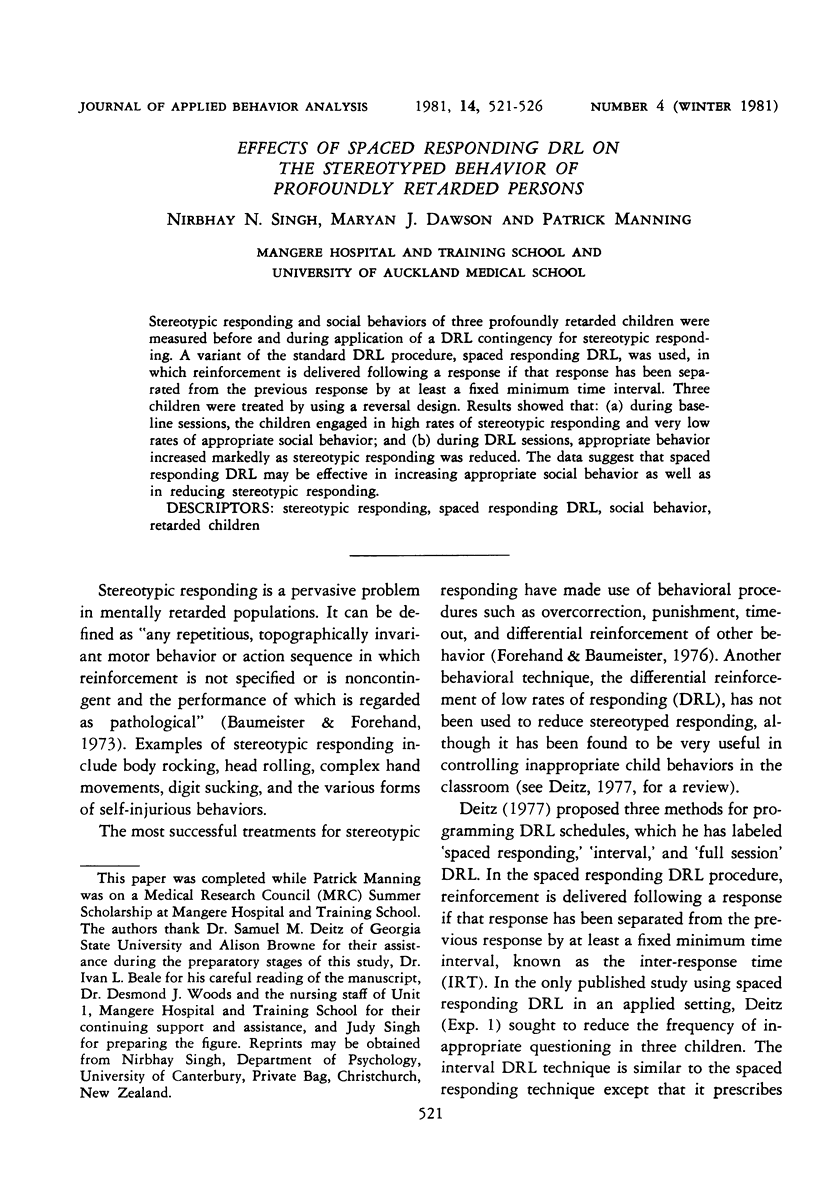
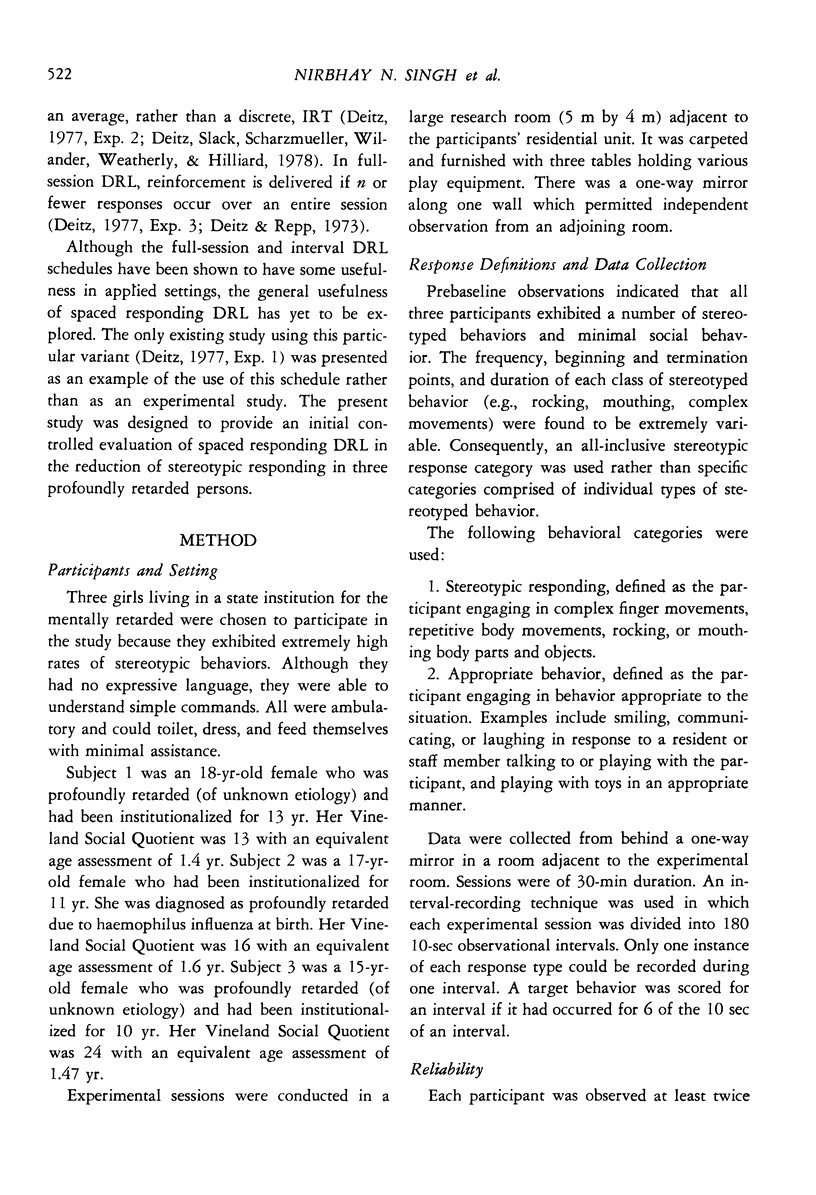
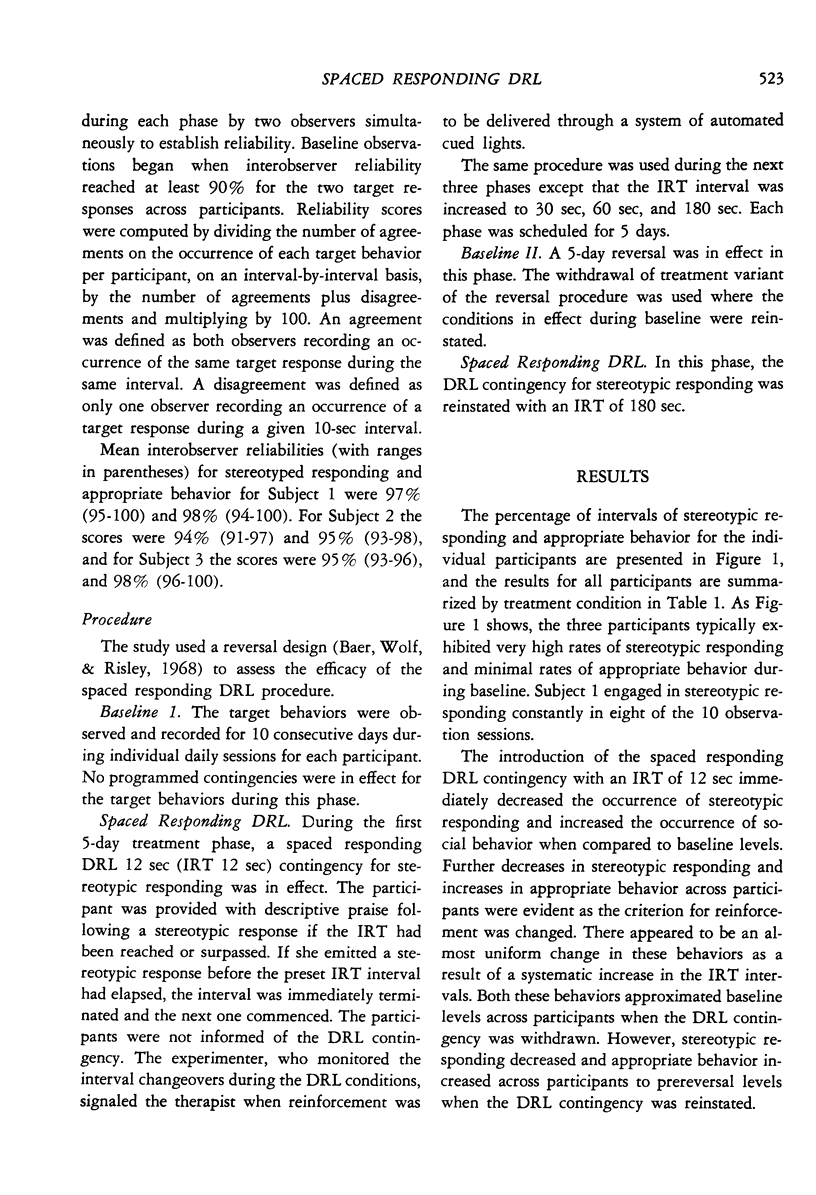
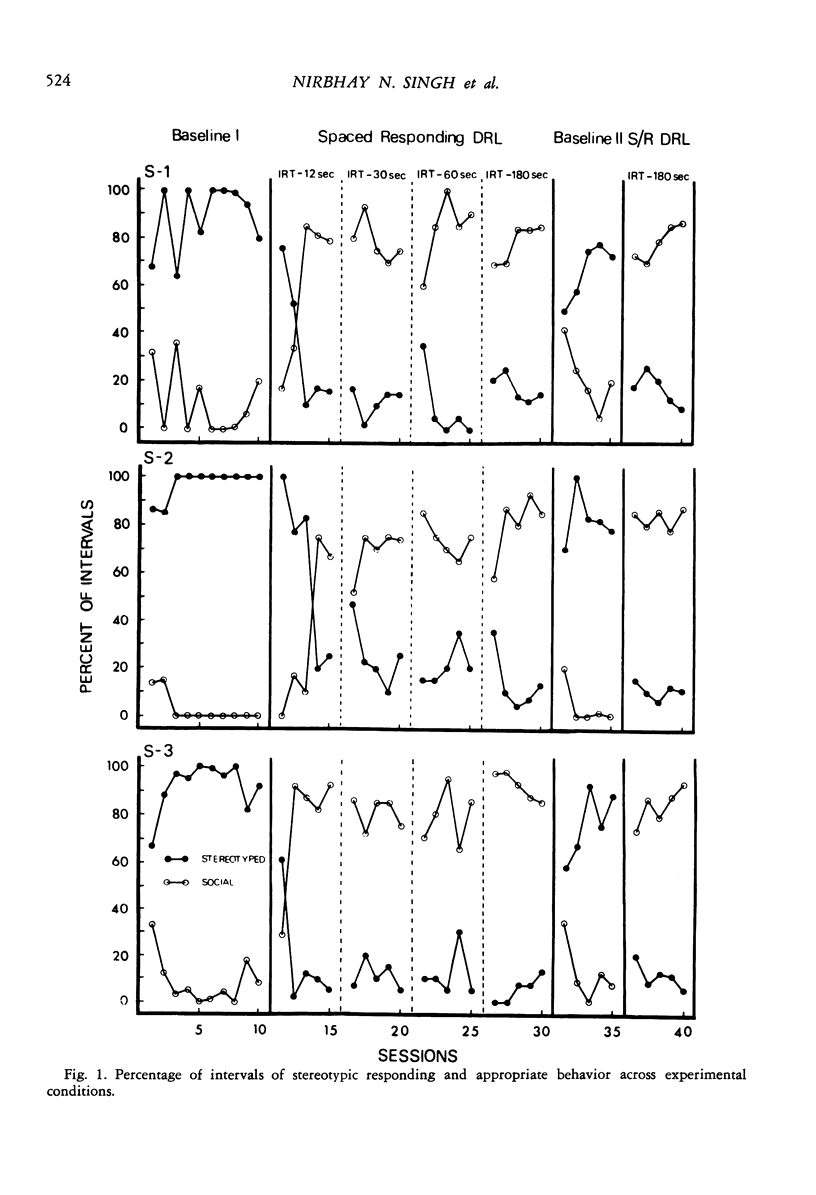
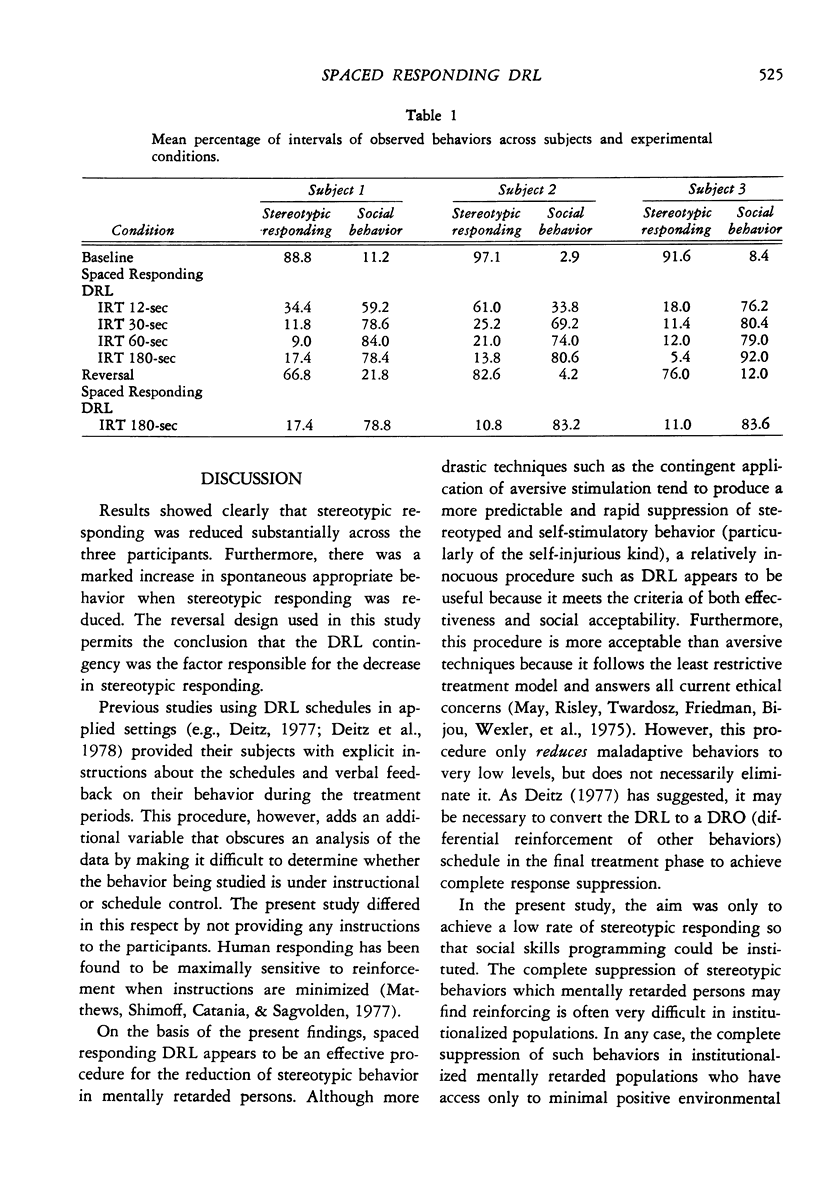
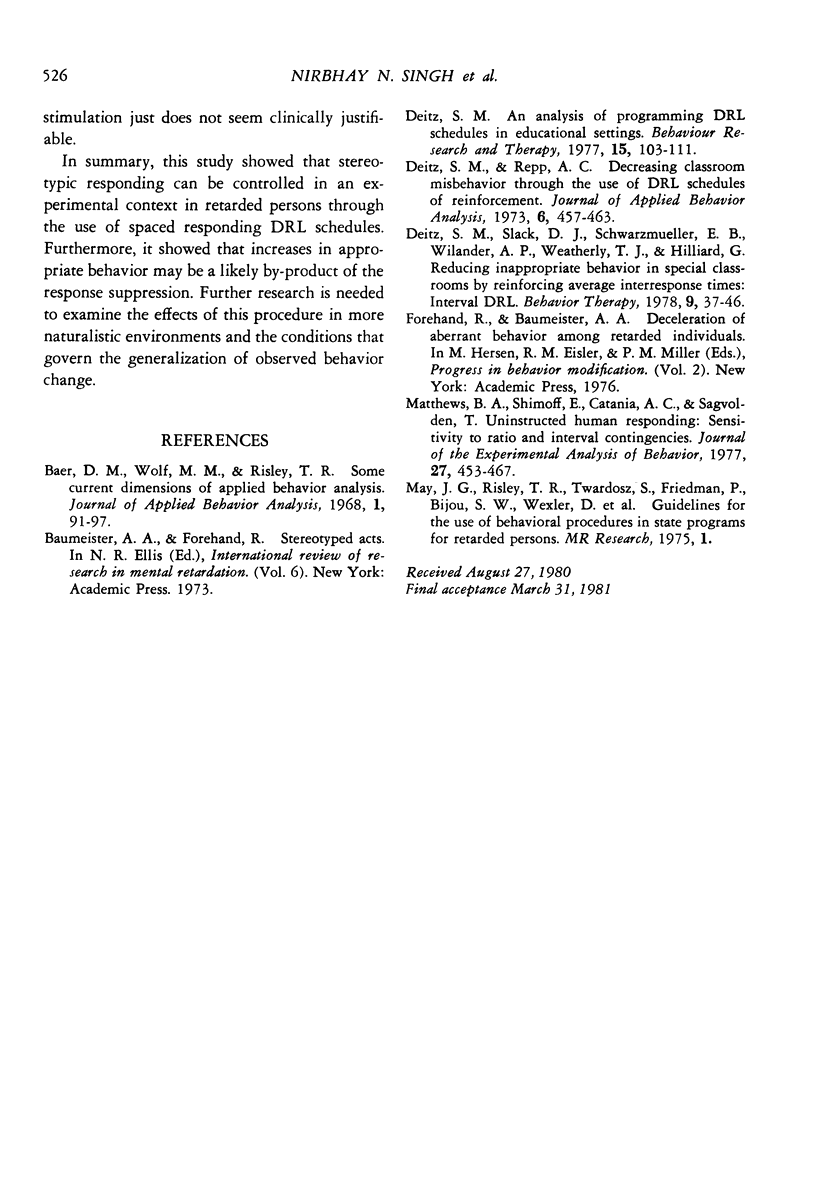
Selected References
These references are in PubMed. This may not be the complete list of references from this article.
- Baer D. M., Wolf M. M., Risley T. R. Some current dimensions of applied behavior analysis. J Appl Behav Anal. 1968 Spring;1(1):91–97. doi: 10.1901/jaba.1968.1-91. [DOI] [PMC free article] [PubMed] [Google Scholar]
- Dietz S. M., Repp A. C. Decreasing classroom misbehavior through the use of DRL schedules of reinforcement. J Appl Behav Anal. 1973 Fall;6(3):457–463. doi: 10.1901/jaba.1973.6-457. [DOI] [PMC free article] [PubMed] [Google Scholar]
- Matthews B. A., Shimoff E., Catania A. C., Sagvolden T. Uninstructed human responding: sensitivity to ratio and interval contingencies. J Exp Anal Behav. 1977 May;27(3):453–467. doi: 10.1901/jeab.1977.27-453. [DOI] [PMC free article] [PubMed] [Google Scholar]


